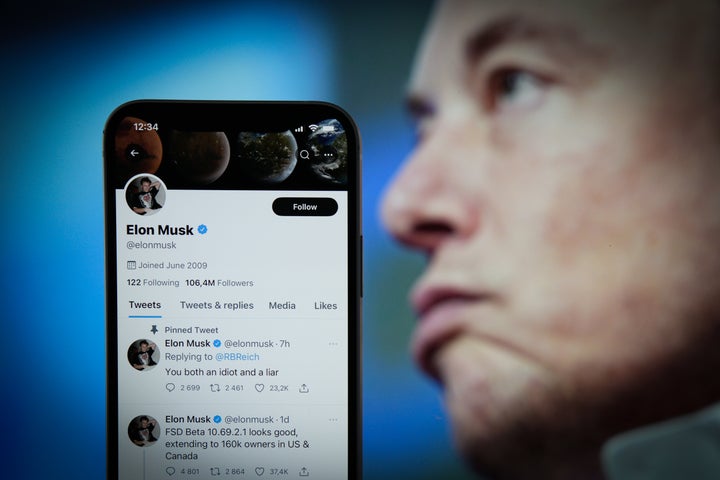
Elon Musk finalised his deal to take over Twitter at the end of October – and the online world seems to have erupted.
The tech magnate first proposed buying the social media platform back in April, but tried to pull out of his $44 billion (£39 billion) deal – only to end up officially Twitter’s owner six months later.
Here’s a recap of everything that’s happened so far.
1. ‘Let that sink in’
Musk went viral by walking into Twitter HQ carrying a sink – presumably so he could make a joke about his purchase on Twitter later.
He has repeatedly promised to bring free speech back to platform, prompting concerns about a spike in misinformation, and hateful tweets while there’s a downturn in security protection.
It was later revealed that, on his first day, Musk dissolved Twitter’s board and made himself “sole director” – meaning he had ousted nine directors including chair Bret Taylor and ousted chief executive Parag Agrawal.
2. Musk’s plea to advertisers
Just after his purchase, some advertisers started to pull out of their deals with Twitter.
According to The Guardian, around 90% of Twitter’s revenues come from advertisers.
Unsurprisingly, the tech magnate then made a public plea to companies pulling out of Twitter, promising that he bought the platform “to try to help humanity” with different “beliefs debated in a healthy manner”.
“Twitter obviously cannot become a free-for-all hellscape, where anything can be said with no consequences,” he said, adding: “Twitter aspires to become the most respected advertising platform in the world that strengthens your brand and grows your enterprise.”
3. Mass firings – and then a U-turn?
On Thursday, November 3, Musk made around half of the staff redundant, informing them by email.
This amounted to around 3,250 of the company’s global workforce.
Musk then defended the decision, claiming, “there is no choice when the company is losing over $4m/day”, equating to £3.5 million a day.
He added: “Everyone exited was offered 3 months of severance, which is 50% more than legally required.”
Former Twitter CEO Jack Dorsey, who helped found the company, then tweeted on Saturday: “I realise many are angry with me. I owe the responsibility for why everyone is in this situation. I grew the company size too quickly. I apologise for that.”
Musk also sacking the whole of Twitter’s human rights team, prompting a top UN official to say this was “not an encouraging start”.
However, Twitter management then reportedly tried to bring back dozens of employees by Sunday. Bloomberg claimed that some people who were being asked to return “were laid off by mistake”, and others were necessary to build the new features Musk was looking to create.
Reporter Casey Newton shared a Slack message allegedly from Twitter, saying it now had the “opportunity to ask folks that were left off if they will come back”.
4. Verifications (Twitter Blue)
Musk has also proposed upending Twitter’s verification process, where accounts which can be verified and belong to a public figure receive a blue tick next to their name.
It is possible to apply for a tick already, and Twitter simply decides if you’re eligible. It’s free.
However, Musk has now unveiled his plans to charge for this “Twitter Blue” for $8 per month (£7), making it available to anyone who can pay. He had initially suggested charging $20 per month, but after an online spat with author Stephen King, Musk dropped it to $8.
It wasn’t long until critics of these proposals began to take advantage of this process. Already verified accounts have started to change their names to Elon Musk – effectively impersonating him.
They were swiftly suspended, countering his vow to bring free speech back to Twitter.
The platform owner then tweeted: “Any name change at all will cause temporary loss of verified checkmark.”
Musk added that any impersonation accounts not clearly marked “parody” will be permanently suspended.
He also said that there will not be a warning before suspension, as “widespread verification” is going to be rolled out.
CNN has since reported that Twitter is delaying the rollout until after the midterms.
5. Content moderation and banned names
For now the rules around moderation remain the same – but there are worries that they will be relaxed after Musk tweeted, “the bird is freed,” on October 28.
He also promised to form a content moderation council with “widely diverse viewpoints”.
However, on October 29 he tweeted: “We have not yet made any changes to Twitter’s content moderation policies.”
Still, this is a major concern that he will subsequently bring back banned accounts include former US president Donald Trump and rapper Ye (formerly known as Kanye West).
6. Any other changes?
Musk has hinted at bringing on some other significant alterations, too.
He suggested bringing back Vine, a video platform which has since been replaced on the market by TikTok, and he has promised the search function within Twitter will get “a lot better pronto”.
He has also proposed the chance to attach long-form texts to tweets, so people with a lot to say do not just add screenshots of their notepad apps.
At the moment, a single tweet can contain 280 characters.
7. An account exodus?
Many famous faces have logged off permanently since Twitter changed hands.
Supermodel Gigi Hadid left Twitter last week, explaining: “I can’t say it’s a safe place for anyone not a social platform that will do more good than harm.”
Singer-songwriter Toni Braxton, producer Shonda Rimes and creator of The Amazing Spider-Man comics Erik Larsen were just a few other names who deactivated their accounts since Musk’s takeover.
Hundreds of thousands have since moved to Twitter alternatives instead, including a six-year-old site called Mastodon.
